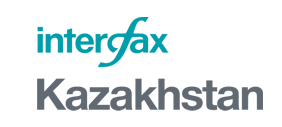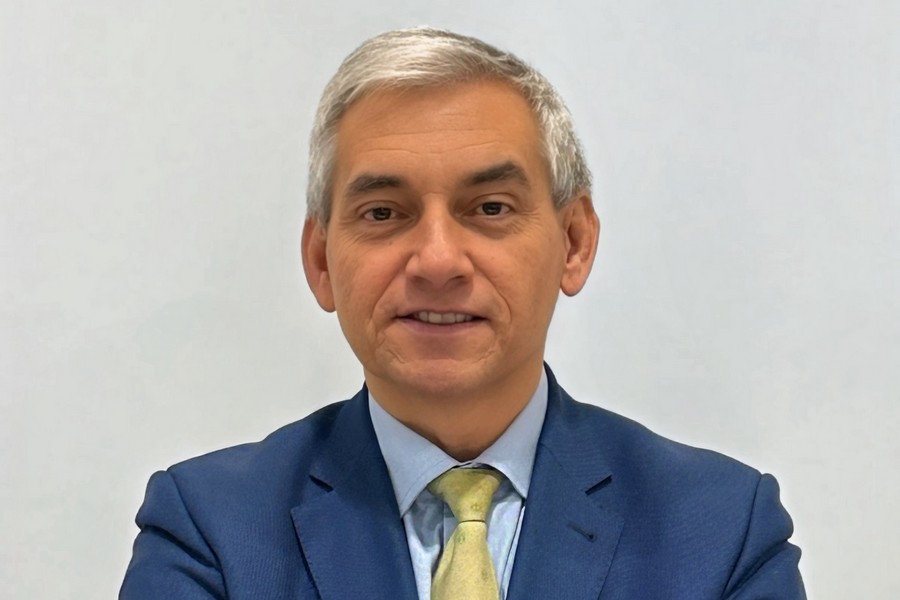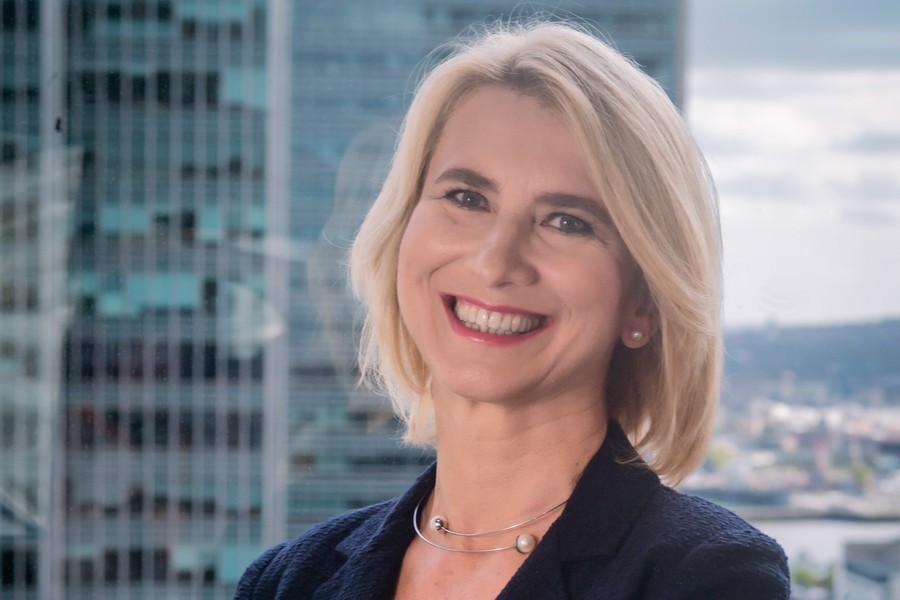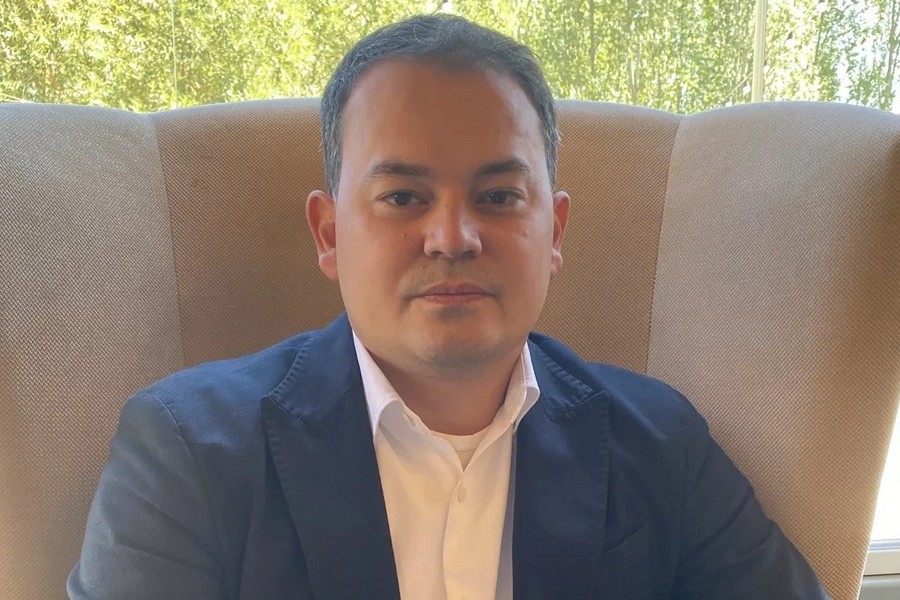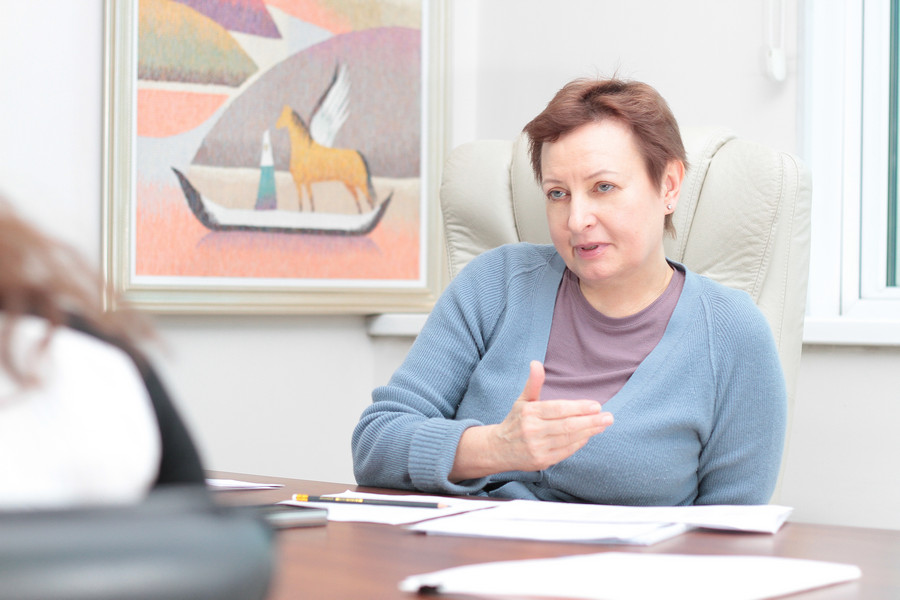Chairperson of the Management Board of the Social Health Insurance Fund Elena BAKHMUTOVA:
COMPULSARY SOCIAL HEALTH INSURANCE SYSTEM MAKES IT POSSIBLE BOTH TO REVEAL PROBLEMS IN HEALTHCARE AND FACILITATE THEIR RESOLUTION
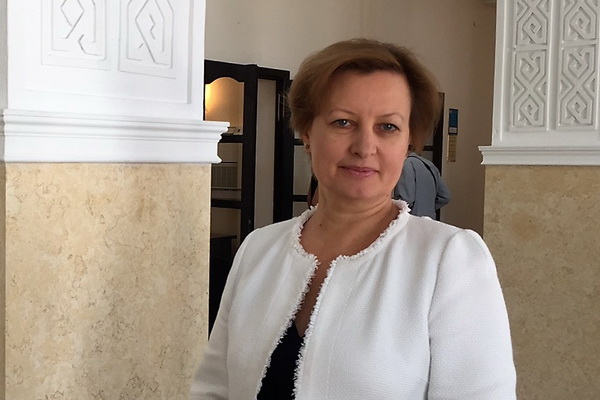
The compulsory health insurance introduction does not imply automatical improvements to the quality of healthcare services but integration of quality indicators into the system depends on the financial model at the time of placing healthcare services order. Elena BAKHMUTOVA, chairperson of the Management Board of the Non-commercial JSC Social Health Insurance Fund maintains this position. In an interview with Interfax-Kazakhstan she also said that currently state healthcare financing is insufficient and the Compulsory Social Health Insurance System (CSHIS) will make it possible to get feedback from a patient and motivate a healthcare entity and a doctor toward effective work.
- How many payers are already in CSHIS and how much money has been transferred by employers to their accounts? What is the size of the system currently we are talking about?
- Contributions as of mid-September amounted to 8.1 billion tenge, 3.9 million people were insured. Most of them - 36.1% and 21% were insured in Almaty and Astana, respectively.
- What changed after it had been decided to get money for healthcare from employers and workers? The state could have simply raised the income tax from 10 to 15% and give 5% in a targeted way for treatment. This isn’t a reform, is just a new tax? How do you think?
- Let’s be correct as far as the terms are concerned. This is not a tax, but a social payment. We have social payments currently; well, there is a social tax that goes to the budget. Theoretically, it should serve as a source of spending on the social sphere. It is clear that its size is insufficient to cover social expenses. In addition to taxes, there are social payments that go, bypassing the budget, for specific purposes. For example, the State Social Insurance Fund operates, to which an employer is obliged to pay payments for employees.
These payments began in 2005 and gradually increased from 1.5% to 5% of the employee’s income. All enterprises pay 5% of their income (no more than 10 minimum monthly wages) for their employees to the State Social Insurance Fund (SSIF). This is done so that, in addition to allowance that the budget guarantees, it would be possible to receive an additional payment from SSIF in case of an insured event, which would be available if the employee previously worked legally, and the employer made payments for him. Benefits from SSIF are provided in case of disability, death of a breadwinner, pregnancy and for the period of care for a child under the age of 1 year, unemployment benefits are also assigned.
This is a globally common mechanism, which fits into a three tier system of social protection. The first tier is guaranteed from the budget for everyone, the second tier is for those who are legally employed and for whom contributions to special funds were made, the third tier is private.
Exactly under the same scheme, healthcare financing has been built up. The first tier is state healthcare financing that provides for minimum medical assistance under the Constitution, which a person cannot do without. Regardless of whether s/he paid taxes or not, it should be provided by the state at the expense of the budget, that is, at the expense of taxpayers. The second tier is the Compulsory Social Health Insurance System (CSHIS) package in case an insured event occurs, that is, additional services, but only if you made contributions or you were paid for, that is, you are insured. [In case] you cannot make payments yourself, the state will make contributions for you as for the concessionary batch [of individuals]. And the third tier is private spending, money from your pocket, you can use voluntary medical insurance or pay for a service every time when you need it.
That is, the mechanism is quite standard in global practice. In Kazakhstan, it is used: the pension system has a basic pension level [to be paid] from the budget, then you get payouts from the Unified Accumulated Pension Fund at the expense of compulsory contributions, and the third level - you can voluntarily accumulate savings or insure your life.
Social health insurance features the second level of a similar three tier system.
- How many Kazakhstani residents buy health insurance vouchers?
- The voluntary health insurance market volume amounts to 22.6 billion tenge, or 4% of private spending on healthcare. It covers 400,000 people, 96% of policies are purchased by employers.
Synergy between compulsory social insurance and voluntary health insurance is quite possible. In particular, by eliminating duplication of services within the guaranteed volume of free medical care, at the expense of compulsory social and voluntary health insurance, of the development of new insurance products, and also through the administration and control by private companies of the quality of services for their clients when they receive voluntary and compulsory social health Insurance services simultaneously.
Yes, there are large queues in state medical organizations - mostly pensioners and children are visiting them, whose share is increasing in the general population structure and they get sick, sadly, more often, thereby leading to an increase in healthcare spending from the budget. But it is impossible for healthy residents to distance themselves from financing healthcare, hoping only for private insurance. The situation with incomes may change, and medical aid may be required urgently. In this case, the CSHIS package is the best solution. However, in CSHIS, money can be collected from our own pockets as taxpayers, employers, as citizens.
Public financing is applied in all countries, somewhere more, somewhere less. For example, in India 1% of GDP is spent on public health. Imagine the level of this healthcare.
- How much higher is this level here?
- And we have 1.9% of GDP. This is clearly not enough, because on average in the OECD countries public funding exceeds 6.5% of GDP. The quality of medical care will not automatically increase solely due to the introduction of health insurance. In order to enhance the quality many components are necessary, but integration of quality indicators into the system depends on the financial model at the time of placing healthcare services order and paying [for these services] .
We say that health insurance is one of the effective tools that will make it possible to get feedback from a patient and motivate a medical organization and a doctor to work efficiently, reduce costs, provide quality services so that he not send a patient back and forth, not run after the set of chargeable procedures, be aimed at the final result. It turns out that the a tool kit is required for functioning medical insurance that makes it possible both to reveal problems and facilitate their resolution.
- What will be included in the minimum secured by the state for people who employers do not pay for? The guaranteed volume of free medical care from the budget declares a wide range of services. However, is there enough money to actually provide it?
- If you need to get everything that is set out there, then you can get it, but within the allocated financing limits. These are the queues, the lack of doctors, the overstretched doctors and so on. Now more and more often sound proposals are heard: “Let’s anyway give a clearer description of the guaranteed amount of free medical care (GAFMC), then people will understand that if s/he is supposed to undergo a checkup only twice, then let him/her know that, and if s/he comes to a clinic for the third time, and this will not be caused by any emergency indications, then s/he will already pay for it."
That’s when we clearly present figures and understand how much this will cost: 950 billion or 1.5 trillion, then if we have only 950 billion, the list of guaranteed free medical care needs to be reduced to 950 billion (341.24 tenge/$1). Yes, this is a very painful thing, but in this process hidden reserves, inefficiency zones, an outdated staffing system and suboptimal processes are revealed, and public hospitals need to work here as private ones – using more effective healthcare management practices.
In order to digitalize this a working group should be established with participation of all interested parties so there is no one-sided view aimed only at raising tariffs.
- How and when will this minimum be established?
- It has already been established in the Code on People’s Healthcare but it is prescribed in a general way so that colleagues-doctors say that this should be set out in detail.
At the level of the government decree, such a list is also set out, and at the level of instructions of the Health Ministry, which it’s difficult already for people to figure out, it is detailed. The task is to make such a list understandable for the general population but detailed enough without possibilities for abusing.
Specialists say that this work requires a year, well, six months. This work has already begun. National Chamber of Entrepreneurs Atameken and the Health Ministry created a joint working group and will analyze the effectiveness of current spending. Naturally, some hidden reserves will emerge, healthcare experts, economists, healthcare organizers from the [healthcare] sector will be invited. They will begin to digitalize the medical care package.
The more detailed it will be, the more profitable it is for everyone, first of all, for a patient. A patient, at least, will know firmly: I can count on this, and for this I pay out of my pocket. And further I decide - maybe, I will buy voluntary insurance. This is a matter of choosing for a person.
CSHIS is the second lapse beyond the minimum, which is in demand by the general population and gives an effect in the form of increasing life expectancy and improving its quality. That is, with such circles: a small circle is the minimum of services, a second bigger circle is CSHIS and the third circle will be everything else.
Everything else needs to be controlled, too. We have private expenses - 40% of healthcare spending. On this indicator, we are somewhere at the level of Ghana. But we need, as well as on all the other issues, to strive, as the head of state said, to get into the top world’s thirty countries. This means that we should strive to catch up with developed countries, and private spending should not exceed 20% of all healthcare expenditures.
- How will we do this?
- The expenses that now come from the pocket should be replaced with something.
- With what?
- With insurance. Then the cost of medicines for treatment will be covered at the expense of contributions to CSHIS, that is, patients are not to pay for them.
Currently medicines that are required for treatment within the framework of the guaranteed volume of free medical care are purchased and available in hospital. That is, no-one should take money from a person for medicines, as they are included in the treatment course and then [paperwork] is billed by a hospital for payment.
With regard to outpatient care, there are categories of individuals - patients on the dispensary list (patients with diseases requiring regular treatment) for a number of diseases, medicines are also provided free of charge.
- Is it possible to expand this list?
- Now there are many discussions ongoing. For example, currently about 112 billion tenge is spent on medicines for outpatient care. It is clear that the money is spent either on some priority groups - there are appropriate orders by the minister, or on patients on the dispensary list.
In the future, copayment for medicines will be gradually introduced.
- How will copayment for medicines be introduced?
- Suppose there are effective generic drugs [drugs with proven pharmaceutical, biological and therapeutic equivalence with original medicines], but a person wants original medicine, then he must pay for it himself, or he, from his point of view, needs more effective generic drugs, although the effectiveness of those prescribed to him is also proved, then it is his choice, and he must pay additionally. Or, although this is a quite “faraway” discussion [timed with] possible introduction of partial payments, but this is already within CSHIS, not only a patient on the dispensary list, but any person, if s/he caught a cold, s/he has complications and suddenly needs antibiotics, for example, then s/he can make a copayment.
In the meantime, we say that if something is declared in the state free medical care or CSHIS package then it should be provided for free but taking into consideration the cost and efficiency.
- How many clinics are there in CSHIS?
- In the course of procurement, a service providers' database is now being formed. 1,519 healthcare entities have applied for, of them 833 public entities.
Assignment of clinics to the Fund has begun. From December 1 the conclusion of agreements will start based on the results of the activity of a nationwide commission (selection and placement of healthcare services among healthcare entities at the national level) and regional commissions.
There are also 686 private clinics in the providers’ database, but some have signed up for primary health care, and some of them only for consulting and diagnostic services. In the future, the main suppliers or co-executors will be formed from among the entire service providers’ database, who will be subcontracted. An assignment campaign is under way among those who signed up for primary care. They can compete. Active patients - and we have 10% of such patients - can change one clinic to another one. If they do not want to change, they will be assigned at their place of residence.
- Why is the Fund confident that the number of private clinics participating in CSHIS will double by 2018? High demand? How do you select private clinics for participation in CSHIS?
- The Densaulyq (Healthcare) Program indicators showed a doubling of the number of private clinics participating in CSHIS. There are two indicators - the volume and the share of financing. The number of private clinics participating in CSHIS will double by 2018. The question is what services do they provide? They are aimed at more cost- effective services. Our objective is to double the aggregate number as a whole, not only in terms of profitability, but also where there is demand. But private clinics cannot be forced to do so. In order for them to join it is necessary to decide the tariff issue.
- Do you have dental services in CSHIS?
- Yes, we do. But only for children and emergency dental services.
- What other areas in healthcare are cost-effective?
-If you listen to private doctors, all is unprofitable. In order for me to answer your question competently the Fund must have its own experience. To understand whether private doctors will participate or not we should need to enter into normal contractual relations with them. Now they have signed up, but the environment is uncertain. Would you enter the uncertain environment?
- I would think twice.
- So they would too. They signed up but have doubts that the Fund will move on as quickly as expected. But once the society has the need for an additional discussion, then it means, it is necessary go through it again. September saw a lot of activity of the round tables. However, the law was passed in November 2015!
- No one believed, apparently.
- Now, as you see, the same thing – let’s postpone for another 2 years. Then – for another 2 years. And then, probably, somehow something will happen ... Any reform requires determination and requires support of those who are directly involved in this reform, who will implement it. Reform concerns all people, it’s correct so that ordinary people also understand this.
- Is the money that is collected by the Fund stored with the National Bank?
- Yes. Let me explain. We have the fund assets and have our equity capital. Our own estimates are our development plan that is approved, controlled, we are accountable for that. And the assets [include] contributions and payments, which are collected through the state corporation Government for Citizens as a one stop shop and transferred to the Fund’s account in the National Bank. The National Bank manages our investment account as well. The National Bank, as a custodian bank, keeps and manages investment money. In order to take money from the National Bank, it’s necessary to substantiate the need for that. It is assumed that we will make all settlements with medical institutions through the National Bank account. To do this a special “client bank” was opened for us in the National Bank in order not to jeopardize assets in a second tier bank, to which something may happen. But nothing may happen to the National Bank, in principle. Bankruptcy, loss do not threaten. This is an additional form of safekeeping and supervision over the assets of the Fund, which are intended for medical services payments.
- Is it true that the Fund raised a loan when it was organized?
- We got temporary financial assistance, but the [amount] has already been repaid.
- And was this temporary financial assistance received simply for the activity of the Fund?
- In order to finance the so-called approved estimates – the development plan or the expenses on the activities. According to the budget code requirements, the charter capital of 106 million tenge can be spent only on the acquisition of fixed assets.
The Board of Directors approved the maximum staff head count of 819 people at the height of the Fund’s activities, including the staff in the branches. At the moment the minimum number of the branches are deployed with a total of 107 staff. There are 57 staff in the head office.
- One of the most pressing issues when we talk about CSHIS is the coverage of the self-employed. According to various data, we have from 2.3 million to 2.7 million self-employed people. What kind of medical care can they get?
- You know, the majority of self-employed people are in the rural areas, and they believe that they must be provided with services. Moreover, they do not pay taxes. In Denmark, this is probably impossible in principle. There, the tax burden is 55%. And you can get nothing for free there. Yes, it seems that there is socialism over there but due to the fact that taxes amount to 55%, and they all pay them. But here people do not pay taxes and live; this sound normal but they must be given something from the budget. And at whose expense? At the expense of the budget, which is put together out of tax payments, including, and by citizens, enterprises, individual entrepreneurs. There are people who generate these incomes, but this does not mean that those people who are self-employed cannot pay insurance premiums either. It is only 1,414 tenge a month from next year. Yes, for a rural community this is also the amount, it needs to be torn away from the family budget, but it matches up to the income level.
The state pays for 14 categories of beneficiaries: the children, pensioners, unemployed, women taking care for children, people taking care for disabled children under the age of 18, for those who are in prisons and so on - for those who cannot pay on their own; employers pay for employees, individual entrepreneurs for themselves and their employees.
The self-employed people are not benefits recipients and must pay 1,414 tenge. The question is - do they have income or not? Speaking about 2.7 million people, almost 1 million of them are those who consider themselves to be self-employed, but they do not make pension contributions. Does it mean that they have income, then? They do. It means that well they can pay for themselves: they can legalize business and employers will pay for them, or either pay 5% of 2 minimum monthly wages as for the individual entrepreneur’s staff, or 1,414 tenge as the self-employed. Thanks to that they will have access to the whole Compulsory Social Health Insurance volume.
- Thank you for the interview!
October, 2017
© 2025 Interfax-Kazakhstan news agency
Copying and use of these materials without reference to the source is prohibited
Archive
